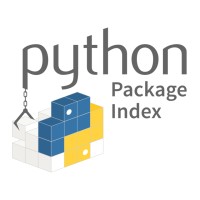
PyPI
The Python Package Index (PyPI) is a repository of software for the Python programming language



The Python Package Index (PyPI) is a repository of software for the Python programming language

We're a global online visual communications platform on a mission to empower the world to design. Featuring a simple drag-and-drop user interface and a vast range of templates ranging from presentations, documents, websites, social media graphics, posters, apparel to videos, plus a huge library of fonts, stock photography, illustrations, video footage, and audio clips, anyone can take an idea and create something beautiful on Canva on any device, from anywhere in the world. Since our launch in 2013, we’ve had the crazy big goal of making design accessible to everyone. We were founded on the belief that people shouldn't need to understand complex software to unlock their creativity. We’re leveling the playing field and democratizing access to design and visual communication by empowering 100% of the world to communicate in a way that was once limited to the 1%. We've always had a deeper mission surrounding Canva — which we talk about as our 'simple' two-step plan: to build one of the world’s most valuable companies, and to do the most good we possibly can. We're committed to our core value of Being a Force for Good, so as the value of our company grows, so too does our ability to have a positive impact on the world.
Security & Compliance Standards Overview












No incidents recorded for PyPI in 2025.
Canva has 354.55% more incidents than the average of same-industry companies with at least one recorded incident.
PyPI cyber incidents detection timeline including parent company and subsidiaries
Canva cyber incidents detection timeline including parent company and subsidiaries
Last 3 Security & Risk Events by Company
ThingsBoard in versions prior to v4.2.1 allows an authenticated user to upload malicious SVG images via the "Image Gallery", leading to a Stored Cross-Site Scripting (XSS) vulnerability. The exploit can be triggered when any user accesses the public API endpoint of the malicious SVG images, or if the malicious images are embedded in an `iframe` element, during a widget creation, deployed to any page of the platform (e.g., dashboards), and accessed during normal operations. The vulnerability resides in the `ImageController`, which fails to restrict the execution of JavaScript code when an image is loaded by the user's browser. This vulnerability can lead to the execution of malicious code in the context of other users' sessions, potentially compromising their accounts and allowing unauthorized actions.
Mattermost versions 11.0.x <= 11.0.2, 10.12.x <= 10.12.1, 10.11.x <= 10.11.4, 10.5.x <= 10.5.12 fail to to verify that the token used during the code exchange originates from the same authentication flow, which allows an authenticated user to perform account takeover via a specially crafted email address used when switching authentication methods and sending a request to the /users/login/sso/code-exchange endpoint. The vulnerability requires ExperimentalEnableAuthenticationTransfer to be enabled (default: enabled) and RequireEmailVerification to be disabled (default: disabled).
Mattermost versions 11.0.x <= 11.0.2, 10.12.x <= 10.12.1, 10.11.x <= 10.11.4, 10.5.x <= 10.5.12 fail to sanitize team email addresses to be visible only to Team Admins, which allows any authenticated user to view team email addresses via the GET /api/v4/channels/{channel_id}/common_teams endpoint
Exposure of email service credentials to users without administrative rights in Devolutions Server.This issue affects Devolutions Server: before 2025.2.21, before 2025.3.9.
Exposure of credentials in unintended requests in Devolutions Server.This issue affects Server: through 2025.2.20, through 2025.3.8.